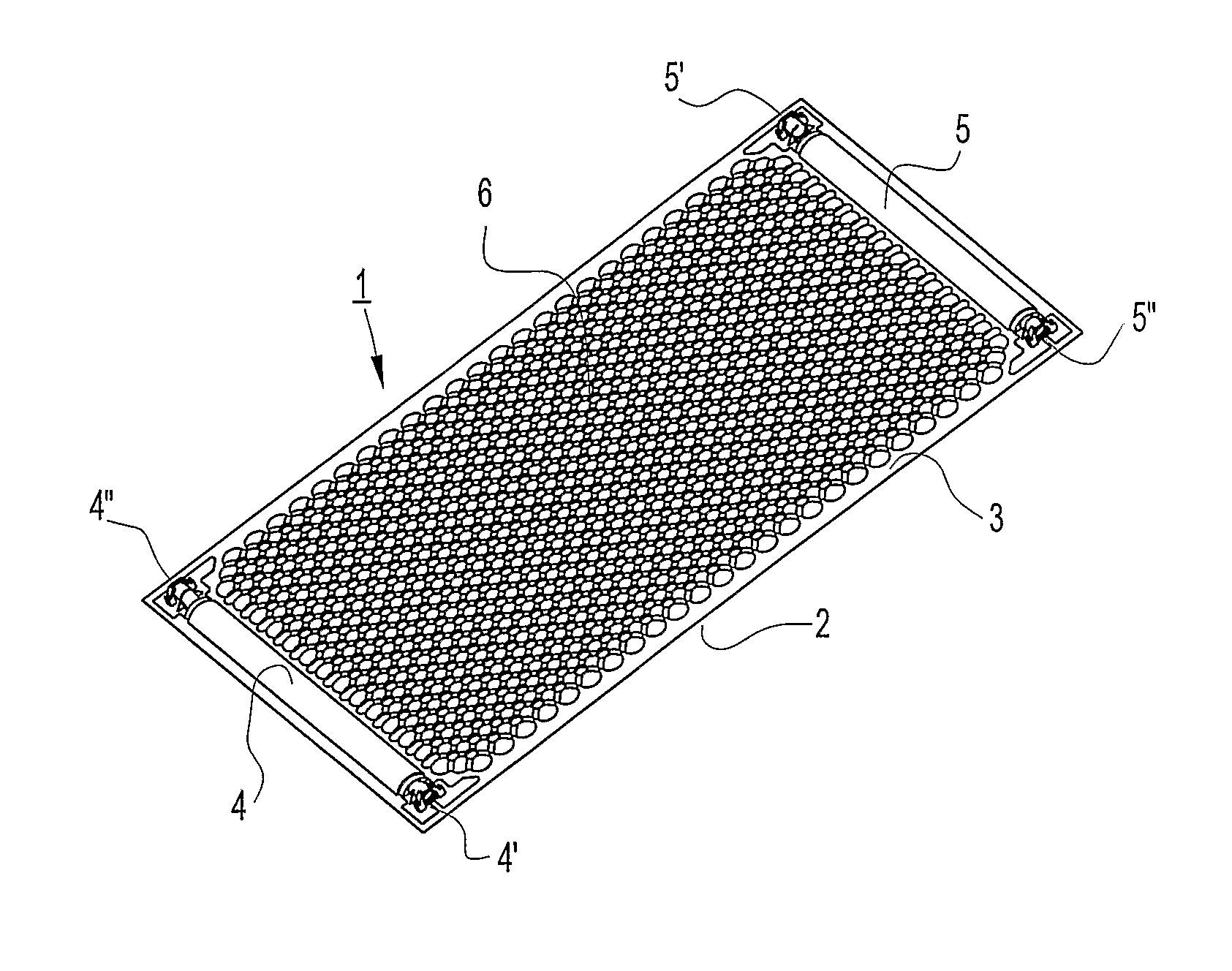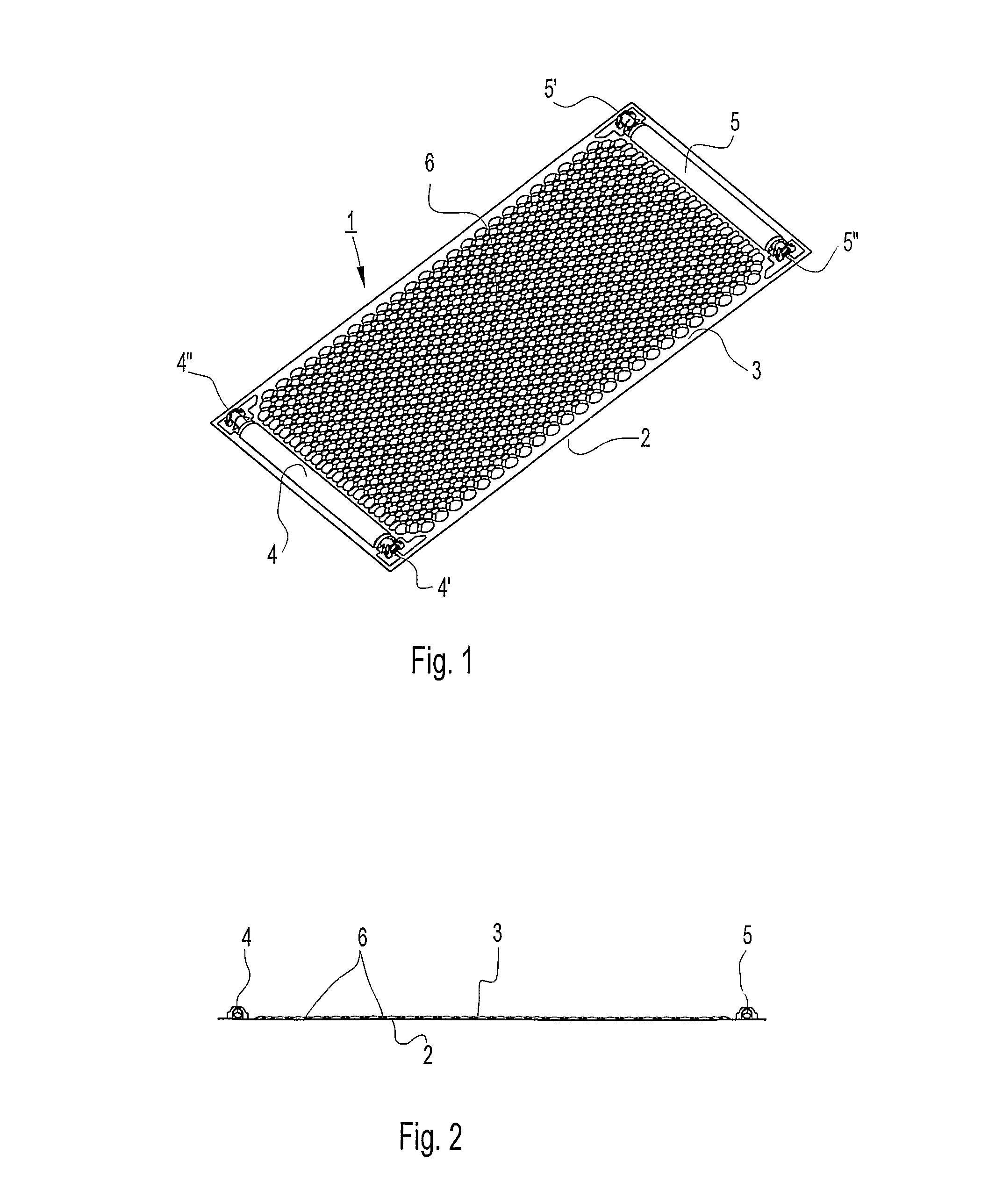Heat exchanger element
a technology of heat exchanger and element, which is applied in the direction of solar heat collectors with working fluids, heating fuel, sustainable buildings, etc., can solve the problems of high electrical conductivity, high production cost of metal based elements, and high production cost of such elements, so as to achieve easy formation and joining
- Summary
- Abstract
- Description
- Claims
- Application Information
AI Technical Summary
Benefits of technology
Problems solved by technology
Method used
Image
Examples
Embodiment Construction
[0026]In FIGS. 1 and 2, a first embodiment of a heat exchange element 1 according to the present invention is schematically depicted. The element 1 has a first rectangular plate 2 that is plane and a second rectangular plate 3 showing a pattern that, together with said first plate 1 when joined, defines an inlet channel 4 and an outlet channel 5 and a passage 6 extending between said inlet and said outlet.
[0027]The two rectangular plates are made of a 1 mm thick thermoplastic material, an ABS. The most important mechanical properties of ABS are resistance and toughness but a variety of modifications can also be made to improve impact resistance, toughness as well as heat and UV resistance. Still it is a thermoplastic material that can be heated and given a form that it will keep when the temperature is again returned below the point allowing a plastic deformation.
[0028]The pattern formed in the second plate 3 can be described as topographic dislocations in one direction from a plane...
PUM
| Property | Measurement | Unit |
|---|---|---|
| Temperature | aaaaa | aaaaa |
| Thickness | aaaaa | aaaaa |
| Electrical conductivity | aaaaa | aaaaa |
Abstract
Description
Claims
Application Information
 Login to View More
Login to View More - R&D
- Intellectual Property
- Life Sciences
- Materials
- Tech Scout
- Unparalleled Data Quality
- Higher Quality Content
- 60% Fewer Hallucinations
Browse by: Latest US Patents, China's latest patents, Technical Efficacy Thesaurus, Application Domain, Technology Topic, Popular Technical Reports.
© 2025 PatSnap. All rights reserved.Legal|Privacy policy|Modern Slavery Act Transparency Statement|Sitemap|About US| Contact US: help@patsnap.com



